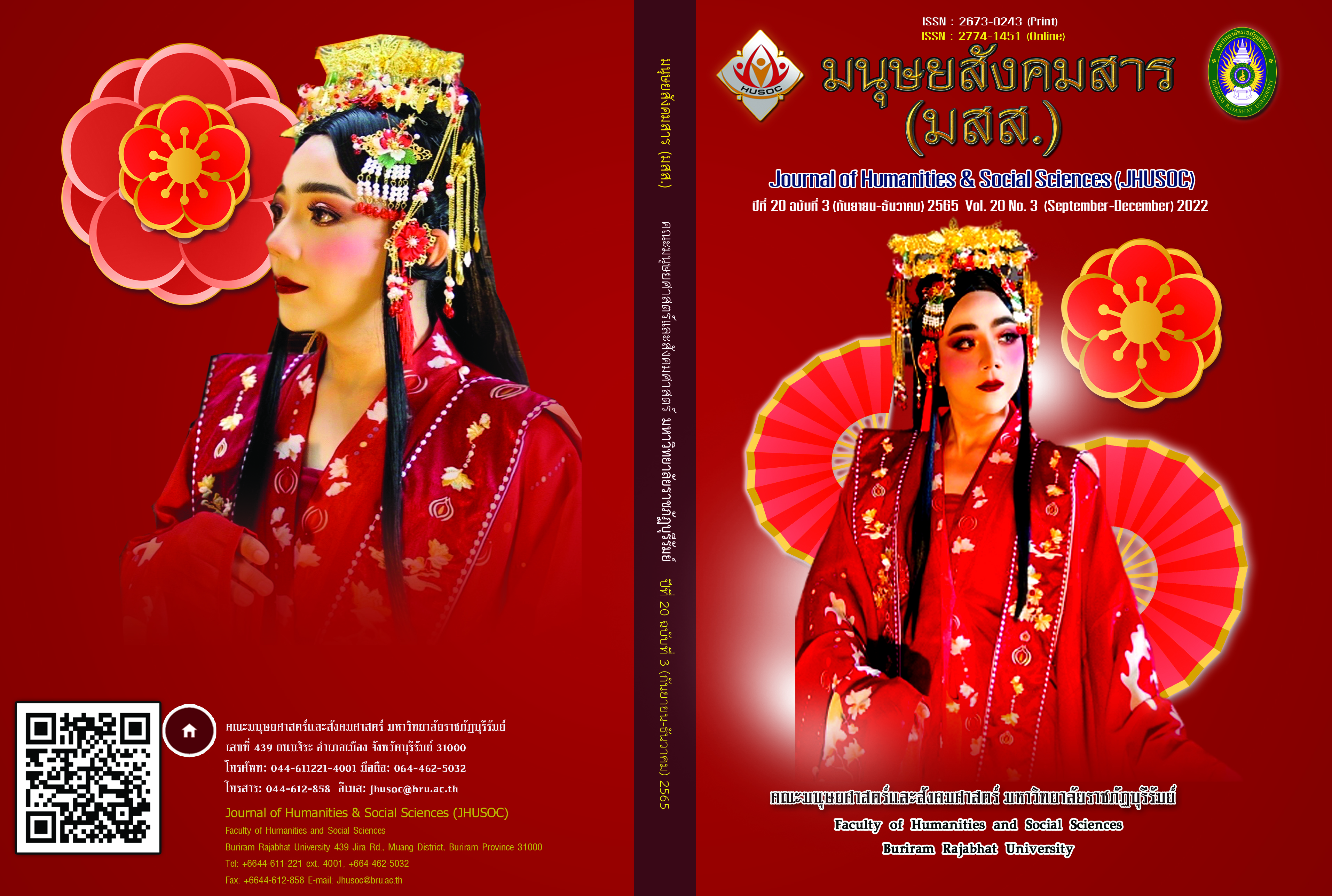การสร้างสรรค์ ละครพันทางหลังยุคจารีตนิยม เรื่อง เจ้าแม่สร้อยดอกหมาก
Main Article Content
บทคัดย่อ
บทความวิจัยนี้มีวัตถุประสงค์ เพื่อสร้างสรรค์ละครพันทางหลังยุคจารีตนิยม เรื่องเจ้าแม่สร้อยดอกหมาก รูปแบบการสร้างสรรค์ครั้งนี้เพื่อนำเสนอหลักการสร้างสรรค์การแสดง โดยวิเคราะห์และตีความตัวละคร ได้แก่ 1) วัตถุประสงค์ 2) ยุทธวิธี 3) สถานการณ์ที่กำหนด 4) สื่อสารแนวคิด และ 5) ความคิดและความรู้สึกที่ตัวละครได้รับ การวิเคราะห์องค์ประกอบของบทละคร ประกอบด้วย 1) ตัวละคร 2) ความสัมพันธ์ 3) โครงสร้างบทละคร 4) กระบวนการคิด และ 5) พัฒนาจากละครพันทาง รูปแบบจารีตนิยมและรูปแบบหลังยุคจารีตนิยม ตามแนวความคิดปรัชญาแนวธรรมชาติ เรียกว่า “ปรากฏการณ์วิทยา” ประกอบด้วย 3 ขั้น คือ 1) การลดทอน 2) การสร้าง และ 3) การทำลาย โดยมีการเสริม เพิ่ม ตัด บางส่วนของบทวรรณกรรมต้นแบบ และนำขั้นตอนของการสร้างสรรค์งานทางนาฏศิลป์ ประกอบด้วย 1) กระบวนการประดิษฐ์สิ่งใหม่ที่ไม่เคยมีมาก่อน 2) การเชื่อมโยงสัมพันธ์สิ่งที่มีอยู่แล้วตั้งแต่สองชิ้นขึ้นไป 3) การปรับแนวคิดเดิมให้สื่อสารประเด็นหลักอย่างกระชับเป็นเอกภาพ ละครพันทางหลังยุคจารีตนิยม เรื่องเจ้าแม่สร้อยดอกหมาก ดำเนินตามบทพงศาวดารเหนือ เรื่องพระเจ้าสายน้ำผึ้ง โดยนำเสนอประเด็นการผิดคำสัญญาของพระเจ้าสายน้ำผึ้ง ซึ่งก่อให้เกิดเหตุการณ์การฆ่าตัวตายของพระนางสร้อยดอกหมากโดยออกแบบลีลาการแสดงและเครื่องแต่งกายลักษณะตามเชื้อชาติของตัวละคร ออกแบบดนตรีและเพลงร้อง ในลักษณะของเพลงออกภาษาตามเชื้อชาติของตัวละคร เพื่อให้สื่อสารแบบเข้าใจง่าย
Article Details

อนุญาตภายใต้เงื่อนไข Creative Commons Attribution-NonCommercial 4.0 International License.
เนื้อหาและข้อมูลในบทความที่ลงตีพิมพ์ในวารสารทดสอบระบบ ThaiJo2 ถือเป็นข้อคิดเห็นและความรับผิดชอบของผู้เขียนบทความโดยตรงซึ่งกองบรรณาธิการวารสาร ไม่จำเป็นต้องเห็นด้วย หรือร่วมรับผิดชอบใดๆ
บทความ ข้อมูล เนื้อหา รูปภาพ ฯลฯ ที่ได้รับการตีพิมพ์ในวารสารทดสอบระบบ ThaiJo2 ถือเป็นลิขสิทธิ์ของวารสารทดสอบระบบ ThaiJo2 หากบุคคลหรือหน่วยงานใดต้องการนำทั้งหมดหรือส่วนหนึ่งส่วนใดไปเผยแพร่ต่อหรือเพื่อกระทำการใดๆ จะต้องได้รับอนุญาตเป็นลายลักอักษรจากวารสารทดสอบระบบ ThaiJo2 ก่อนเท่านั้น
เอกสารอ้างอิง
Fine Arts Department, Vajirayan Library. (1914). Pongsawadarn conference, Region 1, Bangkok: Thai printing press at Sapanyosse. [in Thai]
Jitpasa, P. (2020, October 24). Arts and culture. Matichon. 129. [in Thai]
Na Pomphet, D. (2017). “Directing of theatrical poetry: A case study of the royally translated script of His Majesty King Mongkut Klao Chao Yu Hua titled The Venice Venture”. The phenomenon of acting. Nonthaburi: Printmaking Co., Ltd.
Nittayasuwan, P. (1988). Drama. Bankok: Fine Arts Department. [in Thai]
Puaphadung, S. (2011). “From Wan Hua Lou and Wu Hu Pingxi to Buan Huai Lao : A study, analysis and comparison of Chinese chronicle fiction and Thai drama”. [Thesis master Chinese branch]. Bankok: Chulalongkorn University. [in Thai]
Robert, N. Bellah. (1960). Beyond belief: Essays on religion in a post-traditionalist. world California: University of California Press.
Royal Academy. (2008). Dictionary of the Royal Institute (Reprint 18th Amendment). Bangkok: Arun Printing. [in Thai]
Visuddhangkoon, S. (2007). The analysis of deconstruction theory of Arsapa Mahathera and Derrida. Research Paper. Faculty of Humanities and Social Science: Khonkaen University. [in Thai]
Wirunrak, S. (2004). Principles of periscope dance performance. Bangkok: Chulalongkorn University Press. [in Thai]


